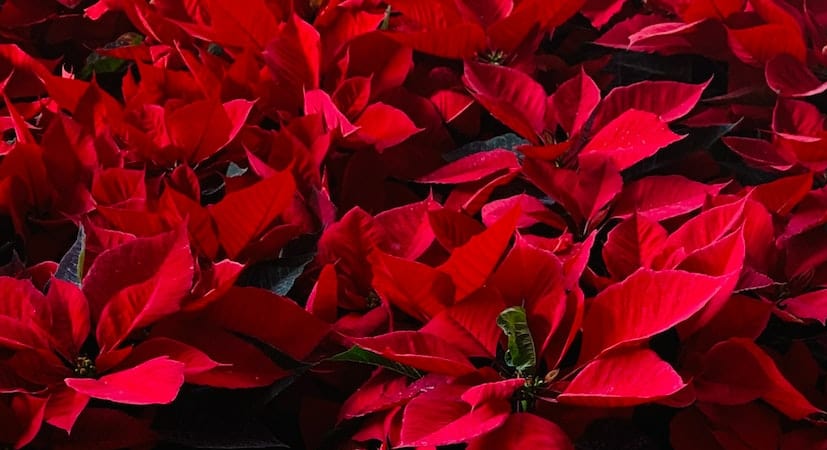During the holidays, many of us purchase or are gifted plants such as poinsettias, amaryllis, paperwhites, garlands and wreaths. While some people with a green thumb are great at keeping poinsettias alive, many people choose to throw them away and buy new plants next year. Consider adding some of these plants and greenery to your backyard compost pile.
Poinsettias
To compost, remove the poinsettia from the plastic nursery pot. Check the potting soil for white balls or specks. These white balls or specks are either Styrofoam (a form of plastic that should be thrown away) or perlite (a natural mineral which can be safely added to compost). To determine what the white stuff is, take a piece and smush it between your fingers. Styrofoam is spongy and will mostly retain its shape; it is also typically shaped like a smooth ball. Perlite is crumbly and should break into smaller pieces in your fingers; it is also typically irregular in shape and size like tiny pieces of gravel.
| Styrofoam Balls | Perlite |
| Soft and spongy between fingers | Hard and may crumble/crush between fingers |
| Shaped like small, smooth ball | Irregular shape and size, looks like tiny gravel |
If the soil has Styrofoam, cut the plant off at the base and throw the soil in the trash. If the soil has perlite, you can safely compost the plant, soil, and all.
Safety note: if you cut or break any part of the poinsettia plant, some milky sap will come out. The sap irritates some people’s skin, and you don’t want to get it in your eyes, so wear gloves, avoid touching your face and eyes, and wash your hands after handling.
The plastic flower pot and any decorative shiny material wrapped around the pot are NOT recyclable. Throw the decorative wrapper away. Reuse the plastic flower pot or find options for recycling flower pots.
Amaryllis and Paperwhite Bulbs
Follow the same rules for amaryllis or paperwhite bulbs. You can compost the spent foliage, bulb, and soil. Some amaryllis bulbs are now dipped in a thick coat of paraffin wax, which eliminates the need for soil. Cut the wax coating away and dispose before composting the bulb and spent foliage.
Amaryllis and paperwhite bulbs can sometimes be saved to bloom again the following year.
Evergreen Boughs and Branches
You can compost any other holiday plants and greenery you might have, such as wreaths and garlands made out of real pine or holly. Make sure to remove any wires, plastic, or bows holding the greens together. Throw those materials in the trash, or save for reuse. Depending on the size of the branches or boughs you may want to cut them into smaller pieces or run through a chipper before adding to your pile so they will break down faster.
Live Christmas trees can be recycled as well.
Composting in Winter
Even though it is winter, you can continue adding organic matter to your compost pile. The process of composting slows down in cold temperatures, so you may notice the materials aren’t breaking down very quickly. That’s okay. As soon as the temperature starts rising in the spring, the microbes, fungi, and insects will wake up from their winter nap and start working on decomposing your organic matter.
Instead of just throwing them away, choose to compost holiday plants and greenery for a more sustainable holiday season.
POSTED ON:
